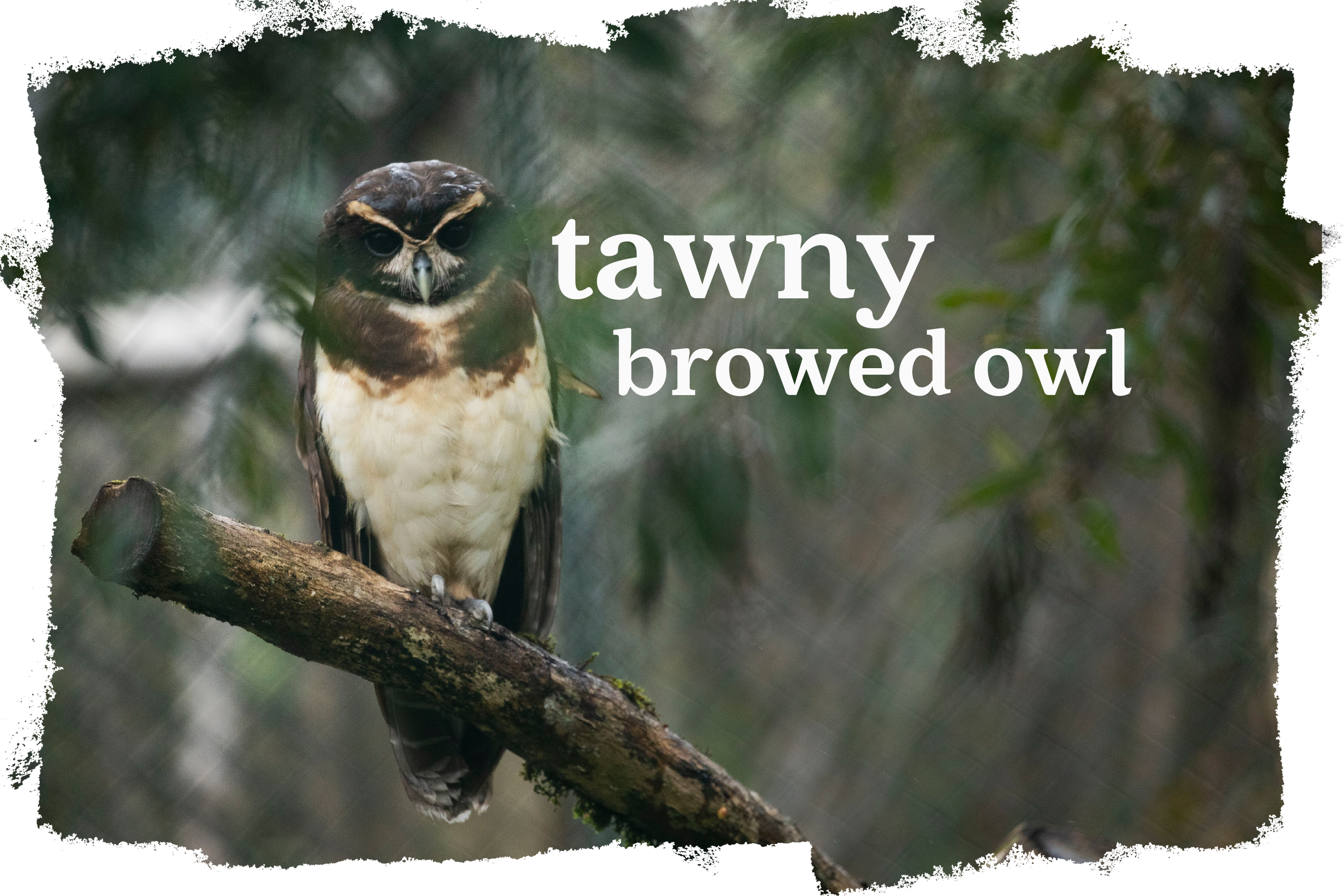tawny-browed owl


The tawny-browed owl has a dark brown back and tail with white stripes. The belly is yellowish, from which its name originates. Pairs sing together and the more acute, stronger voice of the female is the one that stands out.
405g to 670g
37cm to 54cm
Important data
MAIN FEATURES
It has a brown face and white eyebrows. The white feathers form an "X" on its face. The male and female have the same plumage.
TOP THREATS
Habitat reduction and loss, mainly the Atlantic Forest biome.
DIET
Large insects, spiders, reptiles, amphibians, sleeping birds and especially rodents and other small and medium-sized mammals.REPRODUCTION
It lays one to two eggs, which are incubated by the female for approximately 35 days, as she is fed by the male. The reproductive period occurs between spring and summer, when temperatures are milder.BEHAVIOR
● Nocturnal species that spends the day perched in trees, alone or with its partner.
● It can also be found during the day in bamboo clumps or palm leaves, usually near water.
● It tends to stay in the same daytime rest places. It can spend years in the same place.
● Makes sounds at any time of the night.
TRIVIA
It is the largest tropical owl and one of the largest in Brazil, reaching 44cm in height. It has excellent night vision and is an almost silent flier.
Geographical distribution





